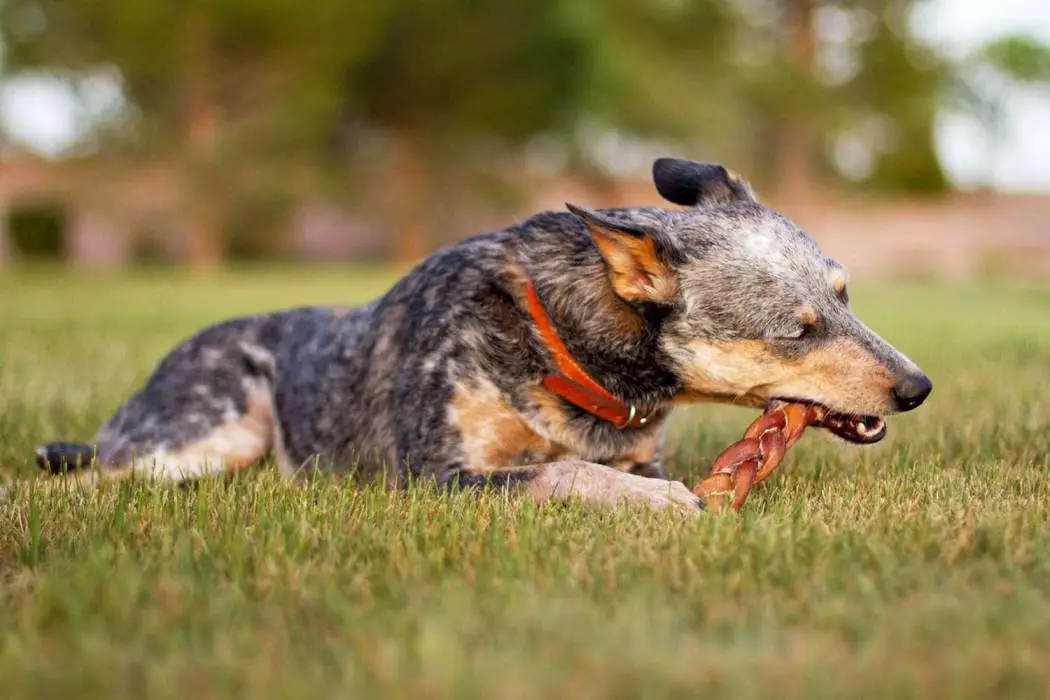Bully sticks are popular dog treats that many pet owners give to their beloved pals. But the issue remains: are bully sticks safe for dogs? In this post, we will cover what bully sticks are, their benefits, potential hazards, and how to pick the proper one for your dog. We shall discover the answer to are Bully Sticks Safe for Dogs. Understanding these characteristics can help you make educated decisions for your pet’s health and happiness.
What is a bully stick?
Bully sticks, also known as pizzle sticks, are chew treats manufactured from dried bull or steer muscle, generally the penis. They’re durable, long-lasting, and have a natural, meaty flavor that most dogs appreciate. Unlike certain treats with artificial additives, bully sticks are typically single-ingredient snacks, which makes them appealing to pet owners who desire a natural choice.
Origins of Bully Sticks
Bully sticks have been around for quite some time, coming from the necessity to employ every part of the animal. They are primarily derived from grass-fed cattle, guaranteeing a superior product. The technique entails drying the pizzle to make a firm, long-lasting chew that dogs adore.
Different Types of Bully Sticks
There are numerous varieties of bully sticks available to suit to different dog sizes and chewing preferences:
-
Standard Bully Sticks: The most frequent variety, formed from the pizzle and dried.
-
Thick Bully Sticks: Thicker in diameter, great for bigger dogs.
-
Odor-Free Bully Sticks: Processed to remove the harsh stench.
-
Braided Bully Sticks: Twisted together for extra durability.
-
Curly Bully Sticks: Twisted into a spiral form for a distinctive texture.
-
Junior Bully Sticks: Shorter sticks for smaller breeds or pups.
Bully sticks are a unique and delightful treat for dogs, giving both nutritional advantages and a satisfying chewing experience. However, it’s crucial to monitor your dog as they enjoy these goodies to safeguard their safety. Remember, moderation is crucial!
Are bully sticks safe for dogs?

When it comes to dog treats, many pet owners question, are bully sticks safe for dogs? The answer is often yes, but there are a few considerations to bear in mind. Bully sticks are constructed from pure muscle fiber, unlike rawhide, which is derived from processed animal skin. Because of this, bully sticks are safe for dogs to consume and healthful. Since they’re formed of muscle, they contain protein and amino acids, which benefit your dog’s brain, coat, and overall health. Plus, they’re 100% natural, contain no additives, and are not produced from dried animal skin.
Another reason bully sticks are safe is that they don’t splinter like bones or get wet like rawhide. Dogs can chew on them and break them down into tiny bits they can consume. While eating, bully sticks also help clean your dog’s teeth.
Essential Vitamins and Minerals
Not only are bully sticks packed in protein, but they also supply critical vitamins and minerals. These nutrients can assist support your dog’s general wellness. Just remember, not all bully sticks are made equal; always check the contents.
Low in Fat
Another bonus is that bully sticks are low in fat, averaging approximately 3%. This makes them a healthier alternative compared to certain other snacks that might be heavy in bad fats. However, it’s still crucial to keep an eye on your dog’s total nutrition.
In summary, while bully sticks can be a pleasant treat, supervision is key. Always observe your dog while they chew to prevent any choking concerns. And if you’re wondering, are bully sticks safe for puppies? The answer is yes, but visit your vet first to confirm they’re acceptable for your puppy’s age and size. Remember, the biggest risk linked with bully sticks for dogs comes from bacterial contamination, therefore purchasing them from trustworthy suppliers is vital.
Overall, bully sticks may be a fun and nutritious treat for dogs, but like everything, they should be given in moderation and with caution!
Potential Risks of Feeding Bully Sticks
When it comes to giving your dog bully sticks, there are a few things to keep in mind. While they might be a pleasant treat, they also come with certain possible concerns that every dog owner should be aware of.
Choking Hazards
- One of the major problems with bully sticks is the possibility of choking. If the stick grows too tiny, your dog could swallow it whole, which might lead to major difficulties. It’s vital to observe your pup while they chew and toss the stick away once it becomes small enough to pose a concern.
Digestive Issues
- Bully sticks are typically easy to digest, however some dogs could still have stomach discomfort. If your dog has a sensitive stomach, you should monitor for symptoms of discomfort after they eat a bully stick. If they look sick, it’s advisable to visit your vet.
Source and Quality Concerns
- Not all bully sticks are made equal. Some may originate from questionable sources, which might lead to bacterial infection. Always pick bully sticks from reputed manufacturers that follow safe production methods. This is especially critical for puppies, as they have more fragile stomachs.
Are Bully Sticks Safe for Puppies?
-
Puppies can like bully sticks, but prudence is crucial. Their tiny stature and delicate tummies mean they need to be checked regularly. Make careful to pick the proper size and quality to keep your young one safe.
-
While bully sticks can be a pleasant treat for dogs, it’s crucial to be aware of the possible hazards associated. Always watch your dog, buy high-quality goods, and be careful of their chewing tendencies to provide a safe experience.
Read Also: Swimming Beside Giants Tonga Humpback Whales
Understanding Your Dog’s Chewing Habits

Why Dogs Love to Chew
Dogs have a natural inclination to chew, and it serves multiple reasons. Chewing helps keep their teeth clean, decreases boredom, and can even lower anxiety. Every dog has its own distinct chewing technique, which can be impacted by their age, breed, and personality.
Signs of Aggressive Chewing
Not all dogs chew the same way. Some dogs are mild chewers, while others may be rather violent. Here are some symptoms that your dog could be an aggressive chewer:
Quickly destroys toys or chews
-
Leaves behind a tangle of fragments and pieces
-
Shows symptoms of dissatisfaction when eating
-
Matching Chews to Chewing Style
Choosing the correct chew for your dog is vital
Here are some guidelines to help you locate the right match:
-
Consider your dog’s size: Larger dogs may need thicker chews, while smaller dogs might prefer thinner choices.
-
Observe their chewing habits: If your dog is a strong chewer, seek for robust items like bully sticks or antlers.
-
Check for safety: Always monitor your dog as they chew to prevent choking dangers. If a chew grows too little, it’s time to chuck it aside.
In summary, understanding your dog’s chewing behaviors will help you pick the correct rewards and keep them safe while they enjoy their chewing time. Remember, supervising your dog as they chew is vital to maintaining their safety and enjoyment!
Choosing the Right Bully Stick for Your Dog
When it comes to finding the appropriate bully stick for your furry buddy, there are a few factors to keep in mind. Choosing the correct bully stick may make a major impact in your dog’s chewing experience. Here’s a simple tutorial to assist you out:
Size Matters
Consider your dog’s size: Larger dogs normally need thicker bully sticks, while smaller breeds or pups could fare best with junior or thinner versions.
Age matters too: Puppies may prefer softer chews, while mature dogs may manage rougher ones.
Inspecting Ingredients
Look for bully sticks manufactured from high-quality, natural ingredients. Avoid those with additional preservatives or fillers.
Check if they are obtained from reliable producers. This guarantees you’re giving your dog a safe treat.
Brand Reputation
Always select companies that are recognized for their quality. A high reputation frequently equals greater safety standards.
Read reviews or ask your vet for advice to locate the best solutions for your dog.
Remember, every dog is unique, so it could take some time to discover the right bully stick that meets their demands. Always watch your dog as they chew to ensure they’re safe and happy!
Frequently Asked Questions
Q1: Are bully sticks safe for puppies?
Yes, bully sticks can be safe for pups, but always observe them attentively to avoid choking. Choose smaller bully sticks especially for pups.
Q2: Can bully sticks induce diarrhea?
Some dogs may have digestive sensitivity to bully sticks, which might cause diarrhea. If you find this, try a new brand or restrict the frequency.
Q3: How long should a dog gnaw on a bully stick?
A decent rule of thumb is to let your dog chew for 5-10 minutes if they’re new to bully sticks, then gradually extend the duration.







